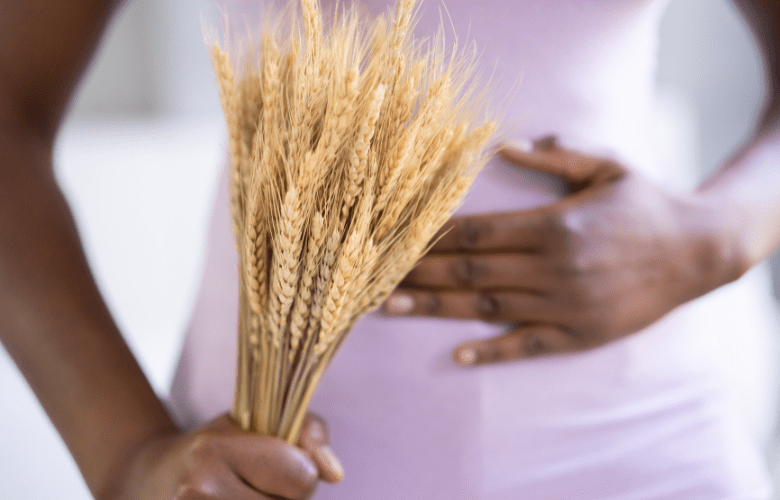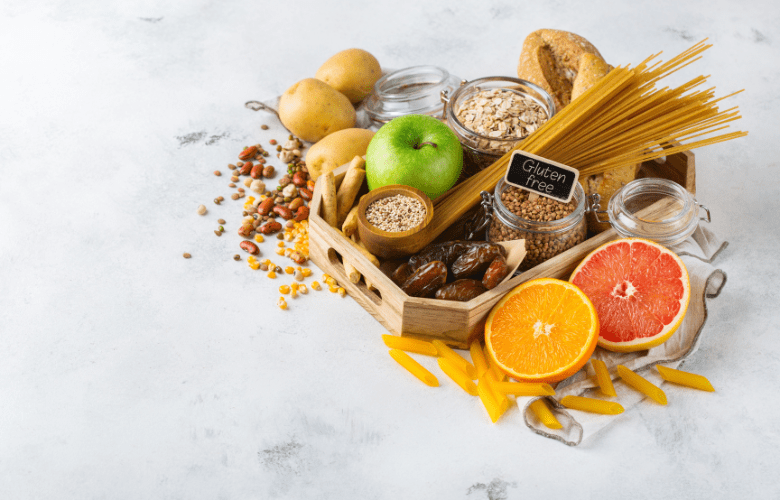8 Proactive Tips to Manage Gluten Intolerance
Navigating a world where even a simple meal feels like a puzzle is no joke. But hold tight because today, we’re handing you some seriously game-changing tips to manage gluten intolerance. From deciphering food labels to learning the art of gluten-free cooking, these insights will empower you to take control of your health and well-being. Discover how dietary restrictions can transform into a flavorful adventure. No more food hurdles holding you back. You can find joy in every bite, even without the gluten!
UNDERSTANDING GLUTEN
Gluten, a protein found in grains like wheat, rye, and barley, has become a buzzword in the world of nutrition. Derived from the Latin word for glue, gluten serves as the culinary adhesive in many foods. It’s what gives pasta its elasticity and bread its characteristic texture.
Notably, gluten is not just confined to the bread aisle. It lurks in less apparent culprits like canned foods, sauces, and even certain seasonings. Moreover, it sneaks into various products, including medicines, vitamins, and supplements.
How does gluten interact with your system during digestion? Well, for most people, it’s a seamless process. The body breaks down gluten, absorbs the nutrients, and moves on. But to others, this seemingly innocent protein can trigger a cascade of unpleasant reactions.
WHAT IS GLUTEN INTOLERANCE?
Gluten intolerance is a condition where the body reacts negatively to gluten consumption. It’s not a choice or a fad diet; it’s a real physiological response that can lead to discomfort and health issues.
Known as non-celiac gluten sensitivity (NCGS), gluten intolerance shares common symptoms with celiac disease. However, it distinguishes itself through its unique impact on the digestive system.
In celiac disease, gluten triggers an autoimmune response, causing inflammation and destruction of the small intestine lining. This leads to a compromised ability to absorb nutrients, potentially causing long-term harm. In contrast, gluten intolerance primarily causes temporary digestive issues without inflicting lasting harm to the stomach, intestine, or other organs.
In comparison to other gut-related disorders, gluten intolerance is distinct in its focus on the body’s response to gluten. While certain gut disorders may arise from infections, inflammation, or structural abnormalities, gluten intolerance is chiefly fueled by an adverse reaction to gluten consumption.
Furthermore, gluten intolerance is frequently misconstrued as a gluten allergy. Unlike allergies, which involve an exaggerated immune response leading to symptoms like itching or shortness of breath, gluten intolerance does not elicit such severe reactions.
Recognizing these differences is crucial, given the current absence of a specific test for gluten intolerance. If symptoms persist after your doctor rules out celiac disease, gluten intolerance should be considered. This is your cue to tweak your diet in a way that suits you and helps you take charge of your health journey.
SYMPTOMS OF GLUTEN INTOLERANCE
For individuals with gluten intolerance, the symptoms can vary widely and differ from person to person. Typical signs include:
- Abdominal pain
- Bloating
- Diarrhea or constipation
- Nausea and vomiting
- Fatigue
- Headaches
- Numbness
- Joint pain
- Muscle cramps
- Trouble concentrating
- Skin rashes
- Anxiety or depression
8 Tips to Manage Gluten Intolerance Effectively
1. Identify common gluten-containing foods.
Begin your journey to a gluten-free lifestyle by grasping the fundamental sources of gluten. Exercise caution and avoid the following foods:
- Gluten-containing grains and their derivatives: wheat, barley, rye, farina, spelt, kamut, farro, couscous
- Most breads, crackers, and wraps: white bread, whole wheat bread, bagels, graham crackers, flour tortillas
- Most baked goods: chocolate chip cookies, cakes, croissants, blueberry muffins, traditional glazed or filled donuts
- Some snack foods: pretzels, certain flavored popcorn, and some packaged snack mixes with wheat-based ingredients
- Certain condiments and sauces: soy sauce (unless it’s specifically labeled gluten-free), teriyaki sauce, and some barbecue sauces
- Some beverages: regular beer, malt beverages, and some alcoholic drinks
- Breaded and fried foods: breaded chicken or fish, onion rings, mozzarella sticks
- Processed foods and meats: luncheon meats, salad dressings, soup stocks
2. Enjoy naturally gluten-free foods.
A myriad of naturally gluten-free foods can contribute to a wholesome and satisfying culinary experience. Keep your gluten-free diet well-balanced by including a variety of nutrient-rich foods to meet your nutritional needs. Delve into:
- Fruits and vegetables: apples, bananas, plums, peaches, kale, broccoli, peppers, mushrooms
- Lean proteins: poultry, fish, eggs, legumes
- Nuts and seeds: cashews, almonds, walnuts, pecans, hazelnuts, pumpkin seeds, sunflower seeds
- Herbs and spices: basil, thyme, cilantro, turmeric, mint, dill, paprika
- Healthy fats and oils: olive oil, avocado oil, nut butter
3. Explore gluten-free alternatives.
Get your chef hat on and try out some gluten-free versions of your go-to dishes. They simplify the transition to a gluten-free kitchen, without sacrificing taste. Below are gluten-free swaps for your baking and cooking adventures:
- Gluten-free flours: almond flour, coconut flour, chia flour, chickpea flour, quinoa flour, sweet potato flour, rice flour
- Gluten-free condiments and seasonings: garlic, sea salt, sage, oregano, parsley, rosemary
- Gluten-free pasta: brown rice, butternut squash, eggplant, carrots, lentils, broccoli stems, sweet potatoes, spaghetti squash, zucchini
- Gluten-free grains: quinoa, amaranth, millet, buckwheat, polenta, cornmeal, teff, tapioca
4. Communicate your dietary needs.
Effectively convey your dietary needs by openly sharing information about your gluten intolerance with friends, family, and restaurants. This transparent communication is key to guaranteeing that your meals are thoughtfully prepared without gluten. Clear convo means tasty, worry-free meals.
5. Be cautious of cross-contamination.
Prevent cross-contamination by using separate utensils, cutting boards, and cooking surfaces for gluten-free food preparation. When dining out, don’t be shy to ask the kitchen crew about their kitchen practices to avoid cross-contact with gluten-containing ingredients. These practices are essential to prevent inadvertent exposure to gluten.
6. Get used to reading food labels.
Develop the habit of scrutinizing ingredient lists to identify any potential sources of gluten in packaged foods. Look out for common terms indicating the presence of gluten, such as:
- Hydrolyzed vegetable protein
- Vegetable protein
- Glutamate
- Malt and malt flavoring
- Modified food starch
- Modified wheat starch
7. Check medication labels.
Give those medication labels a good once-over, especially when you’re dealing with gluten intolerance. Some sneaky ones might have gluten hiding in them as part of their formulations. Consult with healthcare professionals, specifically pharmacists, to make sure your meds are free from gluten. Stay savvy, stay healthy!
8. Listen to your body.
Pay attention to how your body responds to different foods. Keeping a food diary can help identify patterns and potential sources of gluten, facilitating informed decisions to promote overall well-being. Additionally, trust your instincts and communicate openly with healthcare professionals about your symptoms for appropriate guidance and support.
The Bottom Line
Living gluten-free doesn’t mean giving up your culinary joy and delicious flavors. Taking on the tips to manage gluten intolerance can spice up your journey. From awesome grains like quinoa to loads of fresh fruits, veggies, and lean proteins, you’ve got a bunch of tasty options. Reach out if you want more personalized guidance, and let’s make your gluten-free adventure even more awesome. Cheers to savoring the richness of a diverse and healthy diet!












